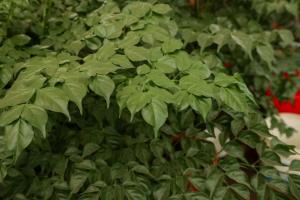Introduction
Stormwater is the water that falls during a rainstorm and collects on the streets and other surfaces. The water flows into the storm drain system, which is designed to collect, transport, and discharge the stormwater into nearby natural waterways such as rivers, lakes, and oceans. But where does the storm drain water go, and is it treated before it enters the natural waterways? This article will explore the answers to these questions.
Where does the storm drain water go?
The storm drain system consists of a network of pipes, channels, and other infrastructure that collect and transport the stormwater from the streets and other surfaces. Eventually, the water flows out of the storm drain system and into nearby natural waterways such as rivers, lakes, and oceans. The water from the storm drain system is not treated before it enters the natural waterways, unlike the wastewater from homes and businesses that is treated at a wastewater treatment plant before discharge into natural waterways.
Why is stormwater not treated before it enters natural waterways?
Stormwater runoff is not treated before it enters natural waterways because it is difficult and costly to do so. Unlike wastewater that is collected from homes and businesses, stormwater runoff is not predictable, making it challenging to design a treatment plant that can handle the varying volumes and types of contaminants found in stormwater. Also, it is difficult to build treatment plants near the storm drain outlets due to space limitations and zoning restrictions.
What is the impact of stormwater runoff on natural waterways?
Stormwater runoff can have a significant impact on natural waterways. The runoff can carry contaminants such as oil, grease, pesticides, and fertilizers from the streets and other surfaces. These contaminants can harm aquatic plants and animals, cause oxygen depletion, and alter the quality and temperature of the water. Also, the increased volume of water from stormwater runoff can cause erosion and flooding, which can damage the natural ecosystems.
What can be done to reduce the impact of stormwater runoff?
There are several ways to reduce the impact of stormwater runoff on natural waterways. One method is to implement best management practices (BMPs) for stormwater management. These practices include installing catch basins and filters to capture contaminants, constructing green roofs and rain gardens to absorb and filter stormwater, and using pervious pavement to allow infiltration of stormwater into the ground. Another method is to educate the public about the impact of stormwater runoff on natural waterways and how they can reduce their contributions to stormwater pollution.
Conclusion
The storm drain system is designed to collect and transport the stormwater from the streets and other surfaces and discharge it into natural waterways. The storm drain water is not treated before it enters the natural waterways, which can have a significant impact on the quality and health of these waterways. While it is challenging to treat stormwater runoff, there are several ways to reduce its impact on natural waterways, including implementing best management practices and educating the public about the impact of stormwater pollution.

 how many times do yo...
how many times do yo... how many planted tre...
how many planted tre... how many pine trees ...
how many pine trees ... how many pecan trees...
how many pecan trees... how many plants comp...
how many plants comp... how many plants can ...
how many plants can ... how many plants and ...
how many plants and ... how many pepper plan...
how many pepper plan...
































